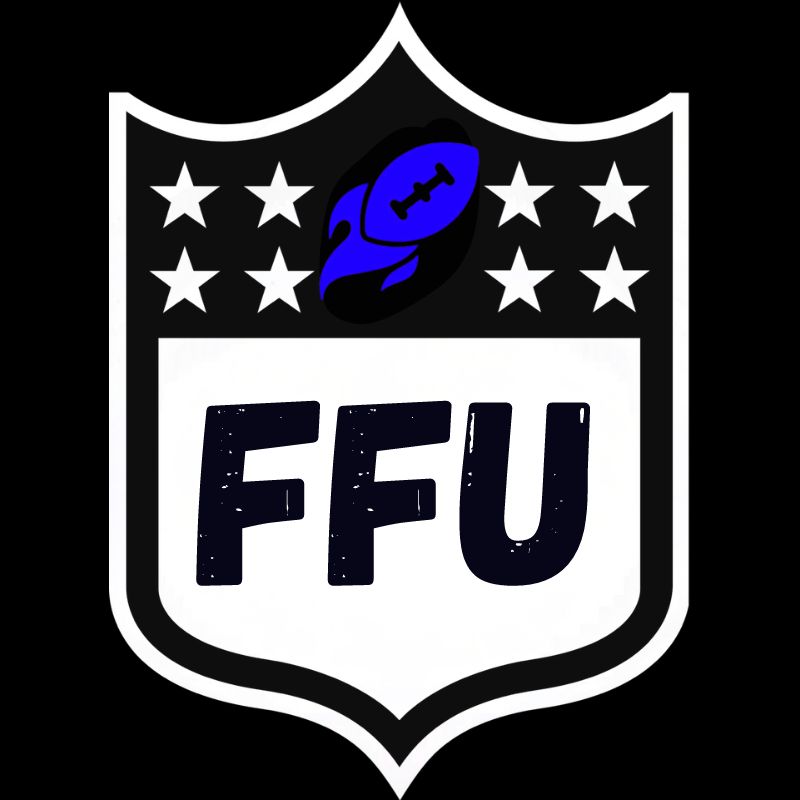For the general public, a standard fantasy football league suffices. If you’re reading this article, you may have grown weary of normal leagues and would like to try something new. Crash Course, a Fantasy Football Universe series, delves into unique formats. So, let’s start with Campus Clash: Tutoring Glory in College Fantasy Leagues.

How Does it Work?
A college fantasy football league is just that, a fantasy football league for college. There are no NFL players. Teams draft college players and just like your standard redraft or dynasty leagues those players are set into lineups. A college fantasy football league (CFF) can be in redraft format or dynasty format.
How is it different?
CFF type of leagues are only different because teams are built with college players, not NFL players. Other than that it becomes a standard setup as any other fantasy football league.
How does the Draft work?
The startup draft is like any other start-up draft, however, in CFF type of leagues, the rosters are typically deeper since the player pool is much larger. In standard NFL fantasy leagues, there are only 32 teams to choose players from. The roster sizes are completely up to the league, but if the league chooses to have every team available to choose from then the rosters are likely going to be larger. There are over 100 colleges to choose from. Startup drafts at minimum are 45 rounds.
A look at the Rosters
Rosters are open to league preference, but a standard CFF roster can be huge. The player pool is large meaning leagues can get creative with their roster size. In some of my leagues, rosters consist of Three starting quarterbacks. Four or five starting running backs. Five or six starting wide receivers. One or two tight ends (tight ends typically do not get much college football production in terms of fantasy). Plus, there are flex spots which again are league preference, but it is not unusual to have six or seven flex spots too. Some leagues even add on one or two super flex positions in addition to having three or more starting quarterbacks. In addition, there are bench spots which can be anywhere between 10 – 20 depending on how deep you want your rosters. On a final note, rosters can also have minor spots that have the same meaning as taxi spots in NFL fantasy leagues. Again the player pool is large, so get crazy with the rosters!
How does the Waiver Wire work?
As always, the waiver wire settings are a matter of personal preference and vary depending on the league. Some leagues prefer rolling waivers, while others before FAAB bidding. With the college player pool potentially including over 100 different universities waivers are a big part as there is always talent to find.
How the scoring works
Again, scoring is not impacted by the league and can be done in any manner of your choosing. There is no wrong or right answer here, it’s all up to you and your league mates.
The Consensus Strategy
- Draft Power-4 Players: Most may enter a CFF league thinking the nationally televised schools have the best players. In terms of prospects, this could be true, however, in terms of college production some Power-4 players may not even be top ten or top 20 at their position. This is a good strategy, but keep your eyes open for the smaller programs with easier schedules.
- Stay Away from Upperclassmen with Minimal Production: Any player can get into their final year and have their best season, but a player with minimal production heading into their final seasons may be best to avoid regardless of the program they are at.
- Punt Tight Ends: As mentioned when discussing the rosters, the tight end position holds little to no value in CFF leagues. Do not get me wrong, sometimes you have tight ends like Brock Bowers that are used heavily in their offense. Those tight ends are rare. Thus, punting the tight end position regardless of how many you start is okay. There may be five to six tight ends max every year in college football with fantastic production, but the others are doing the bare minimum in terms of fantasy football.
- Build Out Your Roster with Yearly Depth: CFF leagues are not like NFL leagues. Players have a shelf life of four to five years max (more times than not, every blue moon a collegiate player is eligible for a sixth year in college). But with this logic, it is wise to not just draft the upperclassmen (juniors and seniors). Build depth around your roster by being flexible. Draft upperclassmen, but also get some sophomores or incoming freshmen. It is not just players that go pro that are no longer on rosters, but also players that just graduate from college meaning they are no longer eligible to play at a college level.
My Strategy
- Draft from Smaller Universities: Do not get me wrong, I still draft players from Power-4 schools. On the other hand, I also take players from the Group of 5 programs! Others do too, but I try to jump the gun and take players early. I do this because typically, not always, but typically the competition is a little weaker. This means players from these programs can have bigger weeks from running up scoreboards. CFF leagues are all about winning without worrying if the players go pro or not, so draft from smaller universities that might have weaker schedules.
- Avoid Freshman Early: In dynasty NFL leagues one may draft younger players during a startup. This helps with the longevity of your team. Yes, the same concept works for CFF leagues, however, not many freshmen hit on year one. It pays to know which freshman should jump into a starting role to get your team some production. On the other hand, many freshmen wait a year (redshirt) before that production begins. If you know a freshman is guaranteed some sort of work then by all means I might draft him, but I am mostly drafting proven players that will produce for me in the given year.
- Pass on Quarterback the First 10 Rounds: I may dabble in drafting one quarterback in the first ten rounds, but more times than not I rather fill out the skill positions. Going back to the player pool there are over 100 universities to choose from and the quarterback is the locked-in position because more times than not they are not getting off the field. For me, I would rather go after skill position players to beef up my depth knowing I may be forced to start four or more depending on rostering settings. Get a top projected quarterback, but then fill out your depth and draft quarterbacks from Group of 5 programs later on.
- Pay Attention to Transfers: The transfer portal is chaotic when it is open. Every year players are transferred to new programs. Yes, that can be great for their production, but at the same that could be bad. Pay attention to the universities that some players are transferring to. They may have been the first option at their previous school, but now after transferring they are the third or fourth option. This could cause a dip in production from a fantasy standpoint.
In Closing
This format is a great resource for your dynasty leagues. It keeps you involved in understanding a player’s college production. Plus, it probably has you watching more college football which gives you an idea of how players could potentially perform at a pro level. I enjoy playing in CFF leagues because it takes out the stress of wondering if my guys will go pro or not. I draft them. I play them. They graduate I move on. Unlike Campus to Canton leagues where you play to win on the college side, but also hope some of your guys make it to the NFL level. Additionally, I love the idea of having large rosters!
Don’t forget to check out the rest of the Crash Course Series. Take a look at the 2024 Fantasy Football Campus Clash League, hosted on Fantrax.

